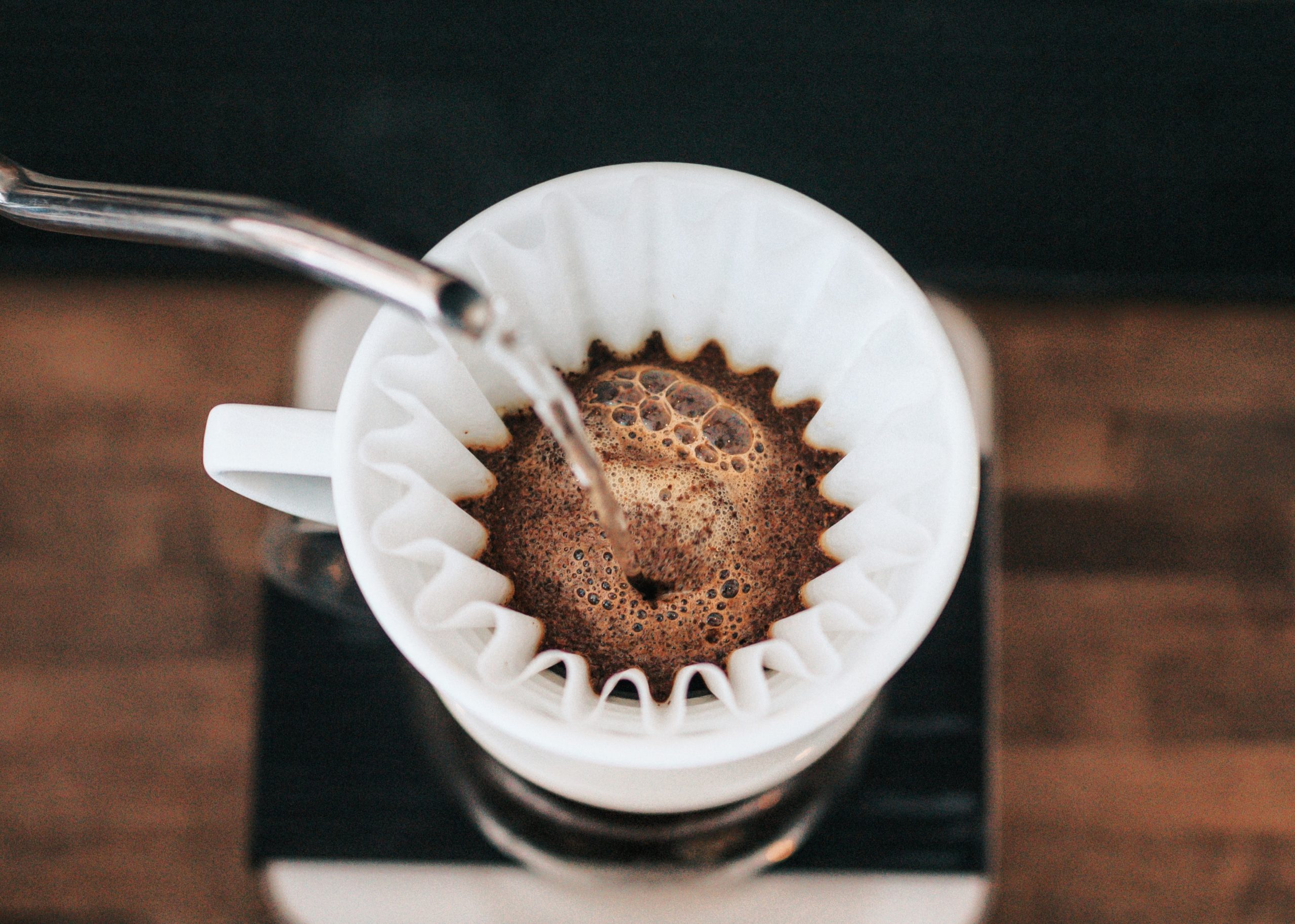Want to know how to bloom coffee and what coffee blooming even is? You're in the right place.
Keep reading to find out more.
What Is Coffee Blooming?

First, let's dive into theory.
When organic matter is heated, it releases carbon dioxide (CO2). This also happens with coffee after it has been roasted. The process of gas release is called degassing.
When we grind the coffee, carbon dioxide emission increases. This limits the number of extractable substances, which affects the taste and aroma of the beverage.
Therefore, before brewing, it is recommended to carry out a pre-wetting process—called blooming—with hot water. This process will help free excess gas from the coffee and allow you to obtain ideal extraction.
During pre-wetting, you can see many bubbles on the surface of the coffee grounds. The bubbles resemble flowers. This similarity with blooming flowers gave the process its name: coffee blooming.
Coffee blooming is the brewing phase that precedes the flow of the bulk of the hot water.
According to Maxwell Colonna-Dashwood, author of The Coffee Dictionary, blooming allows you to appreciate the freshness of a roast. James Hoffmann, author of The World Atlas of Coffee, points out that there is no scientific basis that proves a need for coffee blooming. However, some studies do indicate that pre-wetting promotes the release of carbon dioxide and helps coffee brew better.
Typically, coffee blooming is not carried out when you're using immersion devices or pressure methods. For the former, this is due to the stability of brewing; for the latter, it's due to inconvenience. But when brewing in any pour-over coffee maker, pre-wetting is pretty much a necessity.
Why You Need to Bloom Coffee Grounds
During the blooming process, the volume of ground coffee increases, access to soluble substances is facilitated, and coffee oils come to the surface. Blooming helps to achieve consistency in the brew and improves the overall quality of the extraction.
If you don't bloom the coffee, the carbon dioxide will remain in the coffee beans and participate in the extraction process. This will make the coffee overly acidic. Removing excess carbon dioxide before the main brewing stage will lead to a tastier cup of coffee.
Another reason to bloom coffee is that blooming helps water freely extract aromas and oils from the coffee. If you don't bloom your coffee, gases will emerge from the coffee too quickly and prevent the water from evenly contacting all the coffee grounds. As a result, the extraction will be uneven.
How to Bloom Coffee
The coffee blooming process is influenced by water temperature, humidity, roast level, hardness of the coffee bean, and the coffee's origin.
If the ground coffee does not bubble during blooming, then most likely all the carbon dioxide has already escaped from the coffee grounds. As a rule, this happens for two reasons: stale coffee or improper packaging. Fresh coffee is sure to bubble when blooming.
The volume of water for blooming is prescribed for specific brewing methods, but on average, you can focus on the ratio of coffee to water—either 1:1 or 1:2. Blooming is usually done for 30-40 seconds, then the remaining hot water is poured in and the main brewing process begins.
The coffee blooming process is simple:
1
Pour a small amount of hot water over freshly ground coffee beans for 30-40 seconds.
2
Wait until the bubbles stop appearing.
3
Finish brewing by pouring the rest of the water over the coffee grounds.
Espresso Coffee Blooming
Modern high-quality espresso machines are equipped with a bloom function that can be turned on or off as desired. If you use the bloom function, the coffee in the portafilter is pre-wetted before extraction begins.
During the pre-wetting process, the hot water soaks the coffee and makes it swell a little. This prevents channeling and over-extraction and improves the flavor of the espresso.
Blooming With Other Brewing Methods
French press and AeroPress coffee can also be bloomed.
To do this, pour a bit of hot water over the ground coffee, stir to ensure no grounds remain dry, wait for a little, and then continue brewing.
If you want to bloom coffee in an automatic drip coffee maker that doesn't have a pre-wetting function, just pour a bit of hot water over the grounds by hand before starting the main brewing process.
Conclusion
We hope you enjoyed this article and that it was useful to you.
It is important to understand how blooming coffee affects the taste of coffee in different conditions. We recommend blooming if the coffee was roasted less than a week ago. In other cases, you can either pre-wet the coffee or not—it's up to you.
Sources
- Effect of Roasting Conditions on Carbon Dioxide Degassing Behavior in Coffee - ResearchGate
- The Hard Bloom - James Hoffman's website
- 47 Tips To Make Pour Over Coffee Like A Barista - Handground
